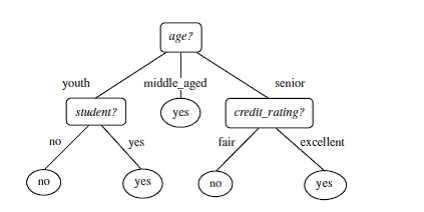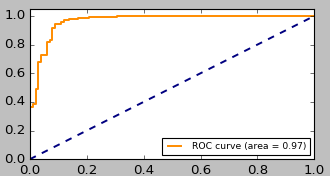CTR prediction using decision trees
Predicting CTR with Machine Learning in Python

Kevin Huo
Instructor
Decision trees

- Nodes represent the features
- Branches represent the decisions based on features
- Sample outcomes are shown in table below:
- First split is based on age of application
- For youth group, second split is based on student status
- Model provides heuristics for understanding
| is_student | loan | |
|---|---|---|
| middle_aged | 1 | |
| youth | no | 0 |
| youth | yes | 1 |
Training and testing the model
- Create via:
clf = DecisionTreeClassifier() Similar to logistic regression, a decision tree also involves
clf.fit(X_train, y_train)for training data andclf.predict(X_test)for testing labels:array([0, 1, 1, ..., 1, 0, 1])clf.predict_proba(X_test)for probability scores:array([0.2, 0.8], [0.4, 0.6] ..., [0.1, 0.9] [0.3, 0.7]])Example for randomly splitting training and testing data, where testing data is 30% of total sample size:
train_test_split(X, y, test_size = .3, random_state = 0)
Evaluation with ROC curve

- True positive rate (Y-axis) = #(classifier predicts positive, actually positive) / #(positives)
- False positive rate (X-axis) = #(classifier predicts positive, actually negative) / #(negatives)
- Dotted blue line: baseline AUC of 0.5
- Want orange line (AUC) to be as close to 1 as possible
AUC of ROC curve
Y_score = clf.predict_proba(X_test)
fpr, tpr, thresholds = roc_curve(Y_test, Y_score[:, 1])
roc_curve()inputs: test and score arrays
roc_auc = auc(fpr, tpr)
auc()input: false-positive and true-positive arraysIf model is accurate and CTR is low, you may want to reassess how the ad message is relayed and what audience it is targeted for
Let's practice!
Predicting CTR with Machine Learning in Python

